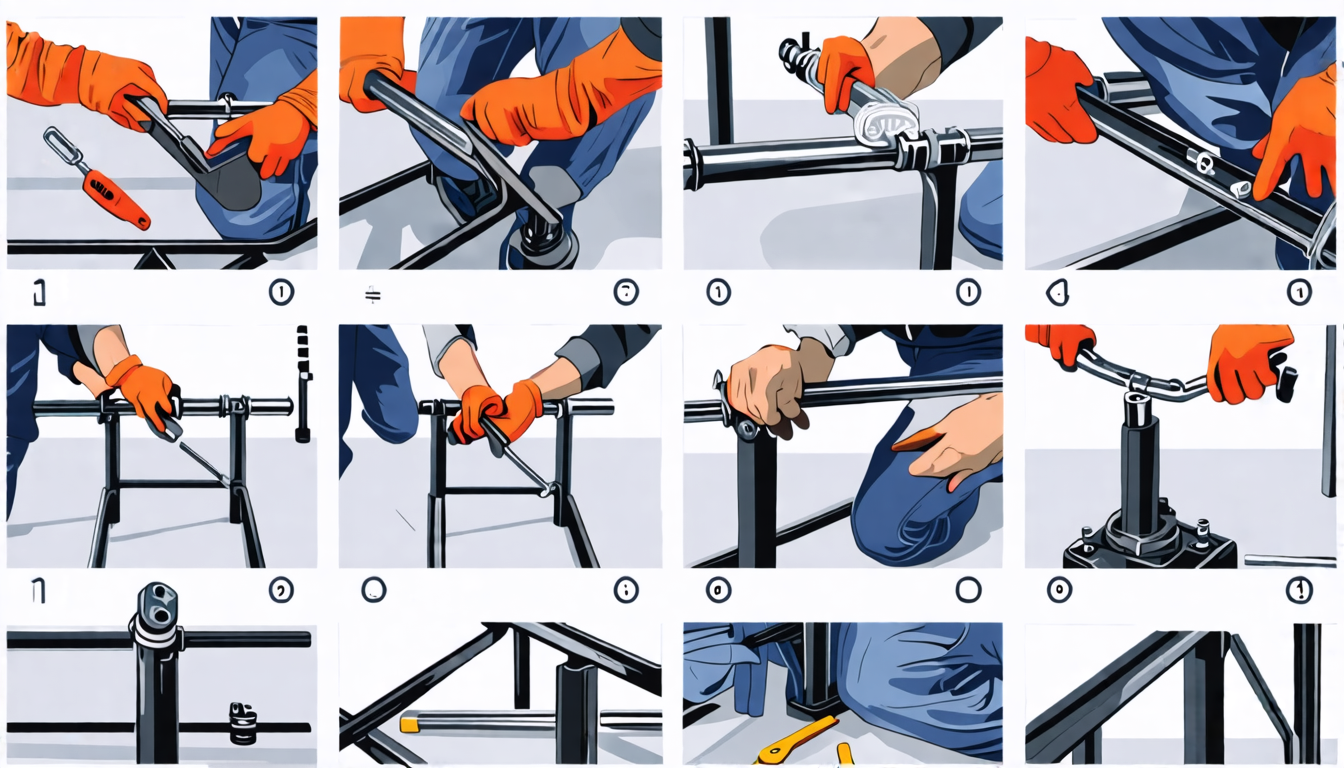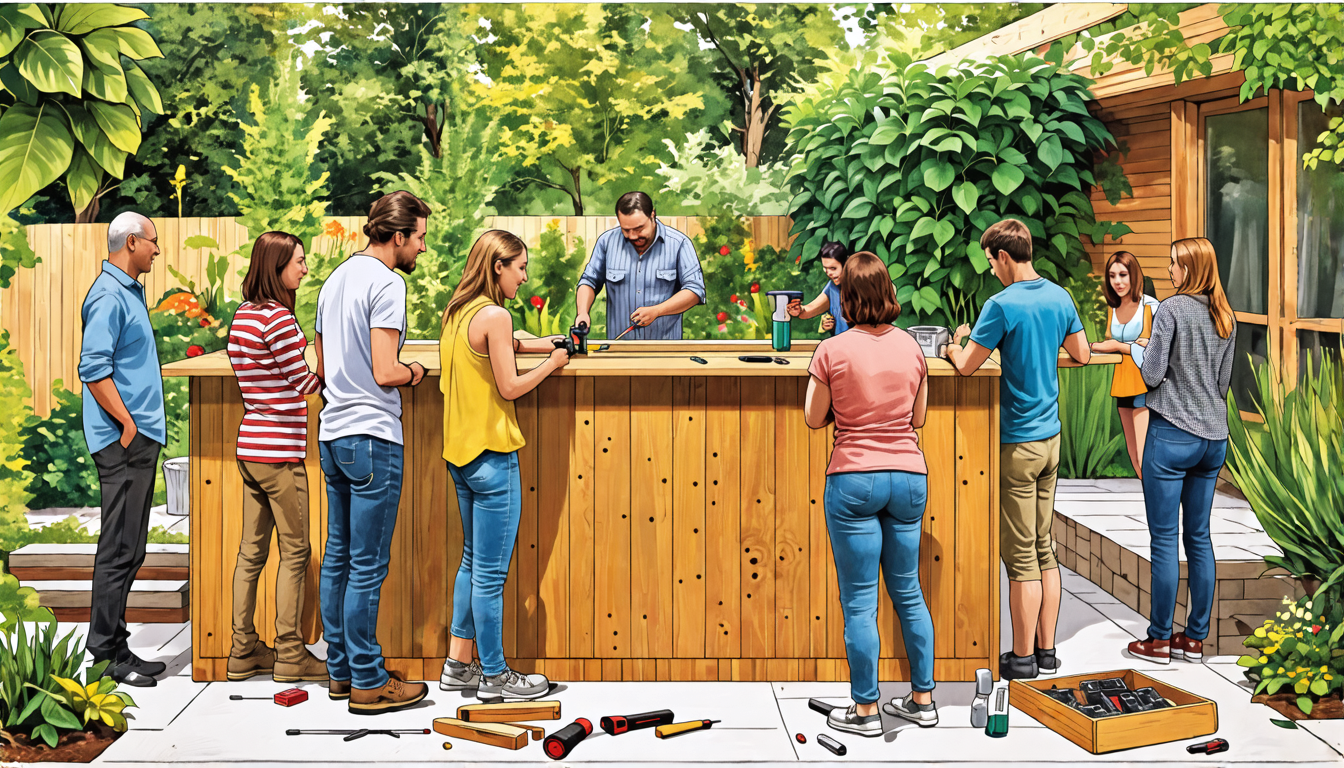Assembling free-standing bars can be a daunting task, especially for those new to the world of home fitness equipment. However, with the right tools, materials, and a clear step-by-step guide, you can set up your free-standing bars efficiently and safely. This comprehensive guide provides everything you need to know about the assembly process, from an overview of the essential tools and materials to detailed instructions and techniques. Moreover, we delve into tips and best practices to ensure the stability and safety of your bars, preventing common mistakes and offering regular maintenance and inspection insights. Prepare to transform your home workout routine with a solid foundation in assembling and maintaining your free-standing bars for optimal performance and safety.
Step-by-Step Guide to Assembling Free-Standing Bars
Overview of Required Tools and Materials
Assembling free-standing bars can be an easy and rewarding process when equipped with the right tools and materials. Here, we outline what you will need to get started:
- Screwdriver: A flathead or Phillips screwdriver may be required depending on the type of screws provided with your free-standing bar kit.
- Allen Wrenches: Often provided with your kit, these are essential for tightening bolts.
- Measuring Tape: Ensures that all components are correctly aligned and positioned.
- Rubber Mallet: Useful for gently tapping parts into place without damaging them.
- Level Tool: Ensures the bar is completely horizontal and level, crucial for stability and safety during use.
- Wrench Set: Different-sized wrenches may be necessary for securing nuts and bolts.
- Protective Gear: Safety gloves and goggles to protect yourself during the assembly.
Ensure that you gather all the parts included in your free-standing bar kit. Typically, these will include:
- Support beams and upright bars
- Base legs and connectors
- Screws, bolts, and washers
- End caps and grips
- Adjustable height mechanisms and locking pins, if applicable
Detailed Assembly Instructions and Techniques
Proper assembly of free-standing bars involves following systematic steps to ensure both functionality and safety. Here is a step-by-step guide:
- Prepare Your Space: Choose a flat, spacious area where you can lay out all of your tools and components. This will make the assembly process easier and more organized. It’s essential to have adequate lighting and ventilation.
- Lay Out All Parts: Place all components on the floor and cross-check with the assembly manual to ensure you have all necessary parts. Organize similar parts together to simplify the assembly process.
- Attach Base Legs to Upright Bars: Begin by connecting the base legs to the upright support bars. Insert bolts through pre-drilled holes and secure with washers and nuts. Tighten using a wrench, ensuring they are snug but not over-tightened.
- Connect Support Beams: Attach the horizontal support beams to the previously assembled upright bars. Secure them with screws or bolts according to the instructions in your manual. Use an Allen wrench or screwdriver to tighten and make sure they are level with the help of a measuring tape and level tool.
- Assemble Adjustable Components: If your free-standing bar has adjustable features, such as height-adjustable sections, assemble these next. Follow the manufacturer’s guidelines to fix adjustable mechanisms and ensure they operate smoothly. Typically, this will involve inserting locking pins and securing them in place.
- Install Grips and End Caps: Attach the grips where necessary for enhanced comfort and usability. Adding end caps to exposed ends of metal bars can prevent potential injuries and give a polished finish to your setup.
- Final Tightening and Adjustment: Go over all previously tightened bolts and screws to ensure they are fully secure. This includes re-checking all connection points to ensure everything is stable and aligned. Use the level tool again to confirm that the bars are properly aligned.
- Final Safety Check: Perform a thorough check to confirm the stability and security of your assembled free-standing bar. Apply gentle pressure and make small adjustments if necessary. Verify that there are no wobbly parts before using the equipment.
Techniques for Optimal Assembly
To ensure the assembly process goes smoothly, consider the following techniques:
- Read the Manual Thoroughly: Before starting, read through the entire assembly manual at least once. Familiarizing yourself with the steps and required tools will save time and reduce errors.
- Use the Right Tools: While it might be tempting to use whatever tool is at hand, using the correct tools makes the task easier and prevents damage to components.
- Work Sequentially: Follow the instructions step by step without skipping any parts. Each step typically builds on the previous one, so missing a step can lead to inaccuracies or necessitate disassembly and reassembly.
- Tighten Gradually: When securing bolts and screws, start by finger-tightening them and then use a tool for a final, secure fit. This ensures that components are correctly aligned before being firmly fastened.
- Ask for Help: Some parts of the assembly might require lifting or holding components in place while securing them. Having a second person can make the process significantly easier and safer.
- Test Adjustability: If your free-standing bars are height-adjustable, test the mechanisms to ensure smooth operation. Make adjustments and lock anything that needs to be secured firmly before use.
By following these methods and the step-by-step guide, you’ll have your free-standing bars assembled correctly and safely, providing a sturdy and reliable addition to your fitness regimen.

Tips and Best Practices for Ensuring Stability and Safety
Assembling free-standing bars can be a straightforward task if done with precision and care. However, to ensure the stability and safety of your equipment, it’s important to follow some key tips and best practices. Whether you’re new to assembling fitness equipment or you’re a seasoned DIYer, these insights will help you maintain a durable and reliable setup.
Common Mistakes to Avoid
While assembling free-standing bars, it’s easy to overlook certain aspects that are crucial for their stability and safety. Below are some common mistakes and how to avoid them:
- Skipping the Instruction Manual: Many people feel confident enough to assemble fitness equipment without consulting the instruction manual. This can lead to missing essential assembly steps. Always refer to the manual provided by the manufacturer to ensure each part is correctly installed.
- Using Incorrect Tools: Using makeshift tools rather than the recommended ones can lead to loose fittings and unstable bars. Always use the specified tools to tighten bolts and screws to avoid future issues.
- Misalignment of Parts: Misaligned sections can compromise the stability of your free-standing bars. Double-check all alignments and fitments during assembly to ensure everything is perfectly in place before fully tightening any screws or bolts.
- Ignoring Weight Limitations: Every piece of fitness equipment has its weight limits. Exceeding these limits can lead to equipment failure and potential injury. Be mindful of the manufacturer’s weight guidelines while using the free-standing bars.
- Not Securing Base Properly: The base serves as the foundation of your free-standing bars. Make sure it’s securely fastened and placed on a level surface to avoid tipping over during exercises.
Regular Maintenance and Inspection Tips
Maintaining your free-standing bars in top-notch condition is essential for both safety and longevity. Regular inspections and maintenance routines can prevent potential issues and enhance your workout experience. Here are some key maintenance tips:
- Conduct Routine Inspections: Regularly check all parts of your free-standing bars, including bolts, screws, and welds for signs of wear, tear, or loosening. Immediate repairs or replacements will prevent further deterioration.
- Tighten Bolts and Screws: Over time, bolts and screws can become loose due to continuous use. Regularly tighten them to ensure the structural integrity of your equipment. However, avoid over-tightening as it can strip the threads and weaken the fittings.
- Lubricate Moving Parts: Keeping all moving parts, like joints and hinges, lubricated will ensure smooth operation and reduce wear. Use appropriate lubricants recommended by the manufacturer to maintain optimal performance.
- Clean the Equipment: Sweat and dust can accumulate on your fitness bars, leading to a slippery grip and corrosion. Clean your equipment regularly with mild soap and water, and dry it thoroughly to prevent rust and prolong its lifespan.
- Check for Level Ground: Place your free-standing bars on a flat, stable surface to avoid any instability issues. Periodically check that the ground remains level, especially if you relocate your equipment.
- Replace Worn or Damaged Parts: Don’t ignore any part that shows signs of excessive wear or damage. Promptly replace worn or damaged components to maintain safety and functionality.
Incorporating these best practices and maintenance tips will help you achieve a stable and safe setup for your free-standing bars. By avoiding common assembly mistakes and doing consistent upkeep, you can ensure a reliable and effective fitness environment.
Assembling free-standing bars may initially seem like a daunting task, but with the right tools, materials, and detailed instructions, it can be a straightforward and rewarding project. This article has provided a comprehensive, step-by-step guide to help you through every stage of the assembly process, from gathering the necessary equipment to employing precise techniques that ensure a robust and functional fitness solution.
Ensuring the stability and safety of your free-standing bars is paramount. By following the tips and best practices outlined in this article, such as avoiding common mistakes and committing to regular maintenance and inspections, you can greatly enhance both the longevity and performance of your equipment. Remember, careful attention to detail during assembly, coupled with periodic checks, will mitigate potential hazards and create a secure environment for your workouts.
In conclusion, the satisfaction of assembling your own free-standing bars is not only in the functional product you create but also in the confidence that it is safe and well-constructed. By adhering to the guidelines and advice presented, you are well-equipped to build a stable and reliable fitness apparatus that will support your training goals for years to come. Happy building, and may your new fitness equipment bring you strength and success!

